Are you a Quiet Speculation member?
If not, now is a perfect time to join up! Our powerful tools, breaking-news analysis, and exclusive Discord channel will make sure you stay up to date and ahead of the curve.
I just remembered something: the RPTQ I qualified for is next week. For some of you, it's this weekend but for me, that's GP Denver. As a result, Standard has unfortunately taken up almost all of my Magic time recently. I know many people think that Modern is broken and unhealthy, but I assure you: Standard is far worse. Modern at least has considerable deck diversity and the potential for any deck to win. There are two decks with reasonable expectations of success in Standard. Everyone else is hoping to get lucky.
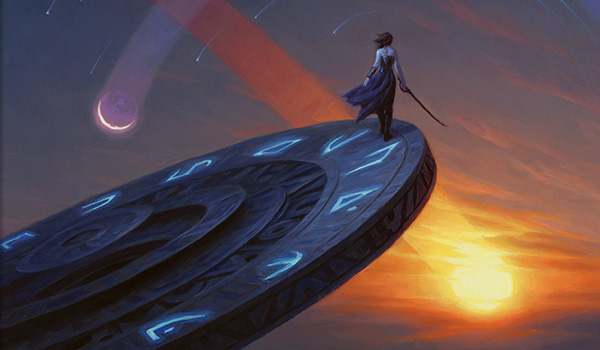
But this is Modern, not Standard, Nexus so enough complaining about that. Instead, lets focus on what being distracted by the inferior Magic format means for my RPTQ chances and what I'm doing to correct for that oversight. At this point, extensive testing is impossible. The GP is my focus this week by necessity. Once that is over I will have less than a week to prepare for the RPTQ. That's not enough time for my usual extensive testing method. I need an alternative, and this means trying to metagame the tournament. The question is where to start.
[wp_ad_camp_1]
A Problem of Scale
The obvious place is the tournament itself. This will be an RPTQ, one of a number held in the second week of RPTQ competition. Obviously I can expect that this will be larger than your 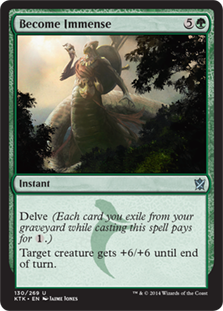 typical PPTQ or IQ but not as large as an Open. The initial assumption therefore is that it will be roughly States-sized or smaller. This is complicated by a few factors that I will discuss shortly. On its face therefore, I would expect an RPTQ to have attendance around 50 players. This is backed up from what I've seen of RPTQs held locally before.
typical PPTQ or IQ but not as large as an Open. The initial assumption therefore is that it will be roughly States-sized or smaller. This is complicated by a few factors that I will discuss shortly. On its face therefore, I would expect an RPTQ to have attendance around 50 players. This is backed up from what I've seen of RPTQs held locally before.
As a result I don't expect the actual attendance to reflect the overall metagame. The larger your sample size, the more likely it is to accurately reflect reality. This is basic statistics. The smaller the sample size, the more likely it is for outliers to dramatically influence the result. As a result I cannot expect any of the overall metagame breakdowns available to be accurate to the metagame I will actually face at the RPTQ. Individual preference and local warps will have far more impact and higher population than what you'd see at an Open. This limits the usefulness of the available data to my quest.
A Question of Timing
The other main problem is when this RPTQ is being held. The first week is concurrent with GP Denver. This will have an impact on attendance at the RPTQ the weekend afterwards. In a "normal" RPTQ period you would expect the out-of-state players to fairly even distribute themselves between the available RPTQs. In Colorado's case this means that you would expect them to spread out between Nebraska and Utah relatively evenly. I expect this on the basis that players will independently determine which weekend works best for their own schedule and travel with those similarly inclined rather than a team dictating the location of travel. This comes from discussions in the community and experience with arranging such travel.
However, there is a GP in Denver. 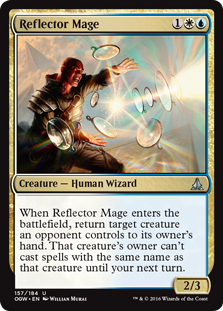 Players who grind PPTQs are likely to also play a GP, especially when it is held locally. As a result, I anticipate that most of Colorado's RPTQ-qualified players will be at the GP instead this weekend. Additionally, it is not unreasonable to expect that players from surrounding states who would have normally attended the Lincoln RPTQ will instead go to the GP.
Players who grind PPTQs are likely to also play a GP, especially when it is held locally. As a result, I anticipate that most of Colorado's RPTQ-qualified players will be at the GP instead this weekend. Additionally, it is not unreasonable to expect that players from surrounding states who would have normally attended the Lincoln RPTQ will instead go to the GP.
As a result I expect that the Utah RPTQ I will be attending will also be attended by a higher-than-normal number of grinders from the mountain region. Higher attendance would push the metagame towards the national average, but not by enough to change things significantly. What I'm certain it will do is make the quality of the competition much higher than expected. If those qualified players who think they can place at a GP actually attend the RPTQ, then I'm looking at a real shark tank. Were it not for the GP, a number of those players would have gone to a different RPTQ and the total competition would be lower.
Putting It Together
Therefore, I am expecting a higher-than-average turnout of very good players for my RPTQ in two weeks. I cannot rely on metagame data to help inform my decision and I know that the turnout will be warped due to other tournaments. On the face of it, I don't have a hope of making an informed decision of the metagame.
Were I trying to approach things as a true outsider I might give up at this point and just try to make my deck fit the national trends. However, I'm not an outsider. I've been part of the grinder community in this region for so long I have additional knowledge that I can pull in to assist me in building an expected metagame. It won't be perfect—and it has been a while since I played in Utah—but if I couple this information with additional analysis I can at least make an educated guess.
The Player Factor
Some states have a reputation about their Magic communities. I don't know what yours is, but Colorado is a red state. As long as I have been playing competitively, we have been known for Burn and red aggro decks. And it tends to play out in practice as I saw back in February. This would lead me to expect a red-centric metagame, but that's not really good enough. Utah Magic is different and I can't imagine that all of their qualified players won't be there. Utah has at various times been in step with Colorado but frequently it wildly deviates. I need to do better.
If you grind a lot, you end up playing against the same group of players pretty consistently. 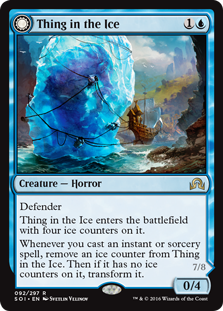 As a result, you get to know their tendencies and deck preferences. As a result, when I search for players qualified for this RPTQ from Colorado, I know which decks won without actually having to ask them. And what I see suggests a very diverse collection. There are a lot of control players present, in addition to a strong showing from Gruul aggro players. More surprising to me are the number of combo players, many of whom are known for oddball brews. On balance it appears that blue and red will be strongly represented while Jund and Infect will be rare. This suggests that Colorado's delegation at least will tend towards less played archetypes. I also know that most of them will definitely play the GP, so if they play the RPTQ, it will be in Utah with me.
As a result, you get to know their tendencies and deck preferences. As a result, when I search for players qualified for this RPTQ from Colorado, I know which decks won without actually having to ask them. And what I see suggests a very diverse collection. There are a lot of control players present, in addition to a strong showing from Gruul aggro players. More surprising to me are the number of combo players, many of whom are known for oddball brews. On balance it appears that blue and red will be strongly represented while Jund and Infect will be rare. This suggests that Colorado's delegation at least will tend towards less played archetypes. I also know that most of them will definitely play the GP, so if they play the RPTQ, it will be in Utah with me.
Of course this will account for less than half of total attendance assuming something weird doesn't happen, so is there anything else I can deduce? Not directly. I don't know the other potential participants well enough to make any guess. But I can look elsewhere for guidance.
Deck Selection Bias
I realize that this is well beyond broken-record territory at this point, but playing what you know is the key to success in Modern. I'm confident in my read of the Colorado delegation because I've seen them play these decks at multiple events over many months. The players that win are very good at playing their decks because they put the time in to master them. It is unlikely that they will throw all that away, especially if they don't have unlimited time to learn a new deck.
It is reasonable to assume that this will also be true for the non-Colorado players. They are more likely to play a deck they know. I may not know what they actually play from experience (and trying to tease it out by searching tournament results is time-consuming), but there is a way I can make an educated guess about their decks. The qualifier season ran from the end of July until the beginning of October. Most of the PPTQs were held in August and September, and the July and October results were close enough that they probably included the same trends as we saw then. Thus the decks that were winning in those months are more likely to be decks that I will see in Utah.
The August Metagame
August was an unusual month in that it was really a continuation of trends from July. There wasn't much movement in the top-tier decks and it looked like the metagame had settled. For reference, this is what Tier 1 looked like:
Tier 1: 8/1/16 - 8/31/16
| Deck | Overall Metagame % | Paper % | MTGO % |
|---|---|---|---|
| Jund | 10.2% | 8.7% | 9.3% |
| Burn | 6.6% | 8.0% | 3.7% |
| Affinity | 6.5% | 6.5% | 7.8% |
| Eldrazi | 6.3% | 4.4% | 11.5% |
| Infect | 5.9% | 6.6% | 4.3% |
| Merfolk | 4.9% | 4.4% | 7.1% |
| Dredge | 4.4% | 3.7% | 7.1% |
| Jeskai Control | 4.2% | 3.9% | 2.2% |
| Death's Shadow Zoo | 3.8% | 2.6% | 7.5% |
Linear aggro decks dominated the tier, but Jund sat comfortably on top. This makes sense; the best interactive deck preyed on all the uninteractive decks. The fact that it was doing this for the second month in a row is a testament to its power and consistency. It's why Jund has always been a very solid choice regardless of the rest of the metagame. If you were playing Jund back then, you'll probably be playing Jund now. The rest of upper Tier 1 was made up of the usual suspects of Burn, Infect, Affinity and Eldrazi. You always see these decks, and as a result I would reason that players who qualified this month were primarily linear aggro players with Jund being a strong addition.
The September Metagame
September was a weird month. The membership of the metagame pinnacle didn't change, but their order and representation did. What appeared to happen was players reacted to the trend from July and August and as a result Jund was dethroned.
Tier 1: 9/1/16 - 9/30/16
| Deck | Overall Metagame % | Paper % | MTGO % |
|---|---|---|---|
| Bant Eldrazi | 9.2% | 6.4% | 5.1% |
| Burn | 8.1% | 8.1% | 6.1% |
| Infect | 7.6% | 6.5% | 3.4% |
| Affinity | 7.5% | 6.0% | 8.4% |
| Jund | 6.5% | 7.7% | 4.1% |
| Dredge | 4.2% | 2.8% | 6.8% |
| Abzan | 4.0% | 4.7% | 4.4% |
As Jason explained in the article, it appeared that Bant Eldrazi took advantage of Jund's dominance and fed on those decks to rise to the top of the metagame. With less Jund around, the decks that Jund was holding down like Infect and Affinity were able to rise. Burn's rise is less explicable, but the end result of all of this is that the population of the top of Tier 1 is effectively equal. Average the population between the two months and you'll see that they're very close. Dredge also had a very consistent performance. This backs up their perceived strength and makes it highly likely that more players qualified using these decks than any others. Not all the PPTQ wins were these decks of course, but it is more likely that these decks did well than any other.
The Likely RPTQ Metagame
This leads me to an interesting conclusion. On the one hand, there was a very consistent trend from the months of the PPTQ season, and thus a reasonable likelihood of Jund, Affinity, Infect, Eldrazi, Burn, and Dredge being highly represented. On the other, I have predicative knowledge about a significant portion of the likely deck population thanks to experience. The Colorado delegation will not be representative of the metagame trend and will feature far more fair and unfair decks than the metagame would predict. The question that leaves is how to reconcile this information and form a useful conclusion.
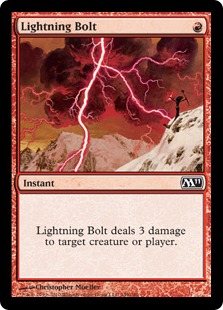 I think in this case it will be useful to group results and focus on the broad archetypes rather than look at specific decks. I know there will be a lot of linear aggro decks of varying types. Against linear aggro you either want to be consistently faster than they are (no mean feat in Modern), or more interactive. I don't play any of the decks I identified as probable competitors, and there really aren't decks faster than those, so I need to be more interactive.
I think in this case it will be useful to group results and focus on the broad archetypes rather than look at specific decks. I know there will be a lot of linear aggro decks of varying types. Against linear aggro you either want to be consistently faster than they are (no mean feat in Modern), or more interactive. I don't play any of the decks I identified as probable competitors, and there really aren't decks faster than those, so I need to be more interactive.
The second category will be fair decks, with Jund being most popular, followed by blue control. To beat these decks you either deny them the ability to interact or win the attrition war. They have enough cheap interaction to make the first option spotty, but I have a number of ways at my disposal to win an attrition fight.
The final category are the unfair decks: Dredge mostly, followed by unusual combo decks. These can be beaten by a combination of fast clocks and powerful hate cards. I prefer decks like this, so this will mostly be a side note. As a result, you can probably guess I will be focusing on finding the right Merfolk configuration based on my analysis here.
Is this a perfect system? Not in the slightest. But if you're like me and facing a major time crunch right before a major tournament, this is a good method for focusing your testing. It cannot replace the months of tuning and refining that you really should favor, but it is much more valid than guessing and hoping for the best.




Hope for the best and that your on target. I must say I like where modern is and how dredge has effected the meta. Grixis Jeskai control, Lantern and Tron should all be fun in this meta. Even a well tuned B/W tokens for this meta will do good o wait it doesn’t like Tron to much haha. All the best.
I love the sort of article with logic and good reasoning. Thank you for that. But I have got a random question; whatever happened to Sheridan Lardner?
Right now he’s pretty busy with a new job. I’m still in contact with him and he has an article or two planned, but the timing is up in the air.
I was just reading his article about Splinter Twin from back in January. He was dead on w/what he expected to have happen to Modern w/all the linear decks, but Affinity has fallen off from his expectation and he had expected it to correct itself by the end of the summer. Was interesting looking back at predictions to compare.
Also, based on an Aaron Foresythe article from April ( http://magic.wizards.com/en/events/coverage/ptsoi/where-modern-goes-from-here-2016-04-24 ), it appears that 1 and 3 are certainly fitting. 2 seems like it is completely shot and 4 is likely incorrect. There are probably cards that can be unbanned and likely a few cards that will be banned. I fully expect both bans and unbans to be announced in January and Modern will be drastically different in its wake.
“Beyond those, Modern should:
1) Have a diverse top-tier metagame featuring over a dozen archetypes
2) Not be dominated by fast, non-interactive decks (consistent kills before turn four are a red flag)
3) Be at a power level that allows some newly printed Standard cards to affect the format (we don’t have other ways to introduce cards into the format, and we like it when cards or decks can transition)
4) Have as small a banned list as possible that accomplishes all the previous goals”
Yeah, Sheridan is great; you’re not the only one who misses him :). As for Forsythe’s goals, remember that definitions of “noninteractive” can vary. By the metrics Wizards has laid out, I think decks that attack with creatures are generally considered kosher—that would include Infect, Affinity, Death’s Shadow, and even Dredge. Certainly Infect and Dredge are playing with fire regarding the turn four rule though.